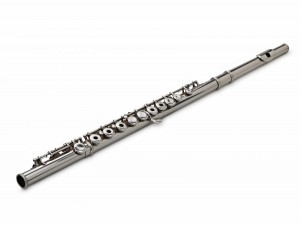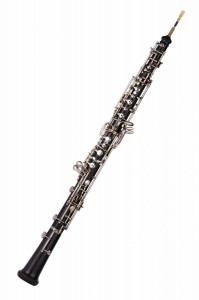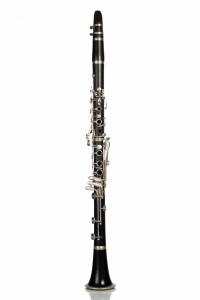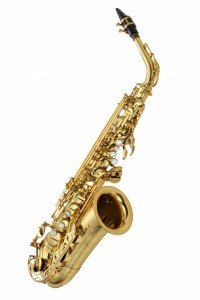
The flute produces a high, clear sound and is the most agile of the woodwinds. To play the flute you hold it sideways, set your lips as if you were about to whistle, and then blow across the air hole. Although the modern flute is made entirely of metal, the flute originally was fashioned from wood and is still considered a member of the woodwind family.

The oboe has no mouthpiece; instead the sound is produced by blowing through two reeds that are tied together. Most bands and orchestras include only one or two oboes, so the music written for them is often very melodic and soloistic. The oboe is more difficult than most other instruments for a beginner, however, so a student interested in oboe will usually start on clarinet or flute. As with the clarinet, modern student-level oboes are made of plastic and more advanced ones of wood.
 The clarinet has a warm, dark tone and the widest range of any of the woodwind instruments. The sound is begun by a wooden reed which vibrates against the mouthpiece when a player blows air through the instrument. The clarinet is also generally the most versatile of the woodwinds, and is equally at home in either symphonic or jazz ensembles. Many clarinets are still crafted from wood, but modern student-level clarinets are made of plastic for economy and durability.
The clarinet has a warm, dark tone and the widest range of any of the woodwind instruments. The sound is begun by a wooden reed which vibrates against the mouthpiece when a player blows air through the instrument. The clarinet is also generally the most versatile of the woodwinds, and is equally at home in either symphonic or jazz ensembles. Many clarinets are still crafted from wood, but modern student-level clarinets are made of plastic for economy and durability.

The saxophone is something of a hybrid instrument: its body is made of brass, but it is classified as a woodwind because it uses a reed to create the sound. The saxophone is larger and requires more air than any of the other members of the woodwind family, and it produces a sound of great volume and projection. As a result, only a few are necessary for a balanced band sound. Students wishing to play saxophone will often begin on clarinet or flute and then switch to sax later.